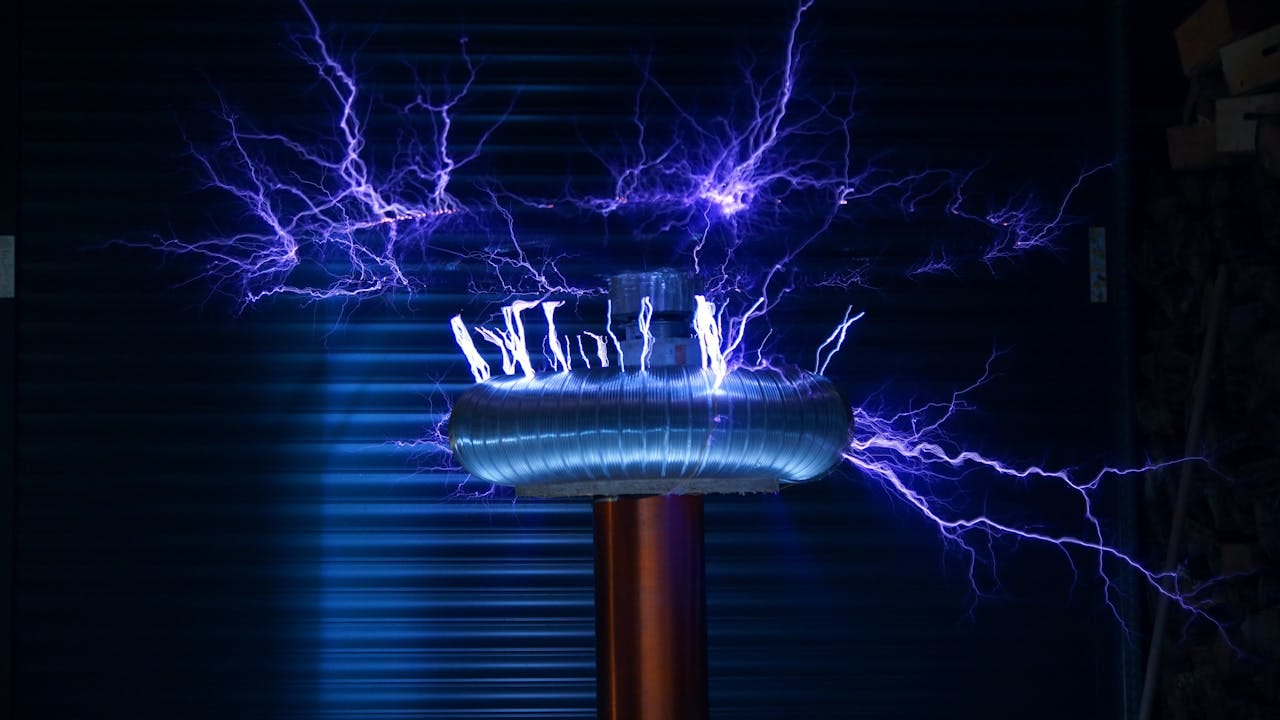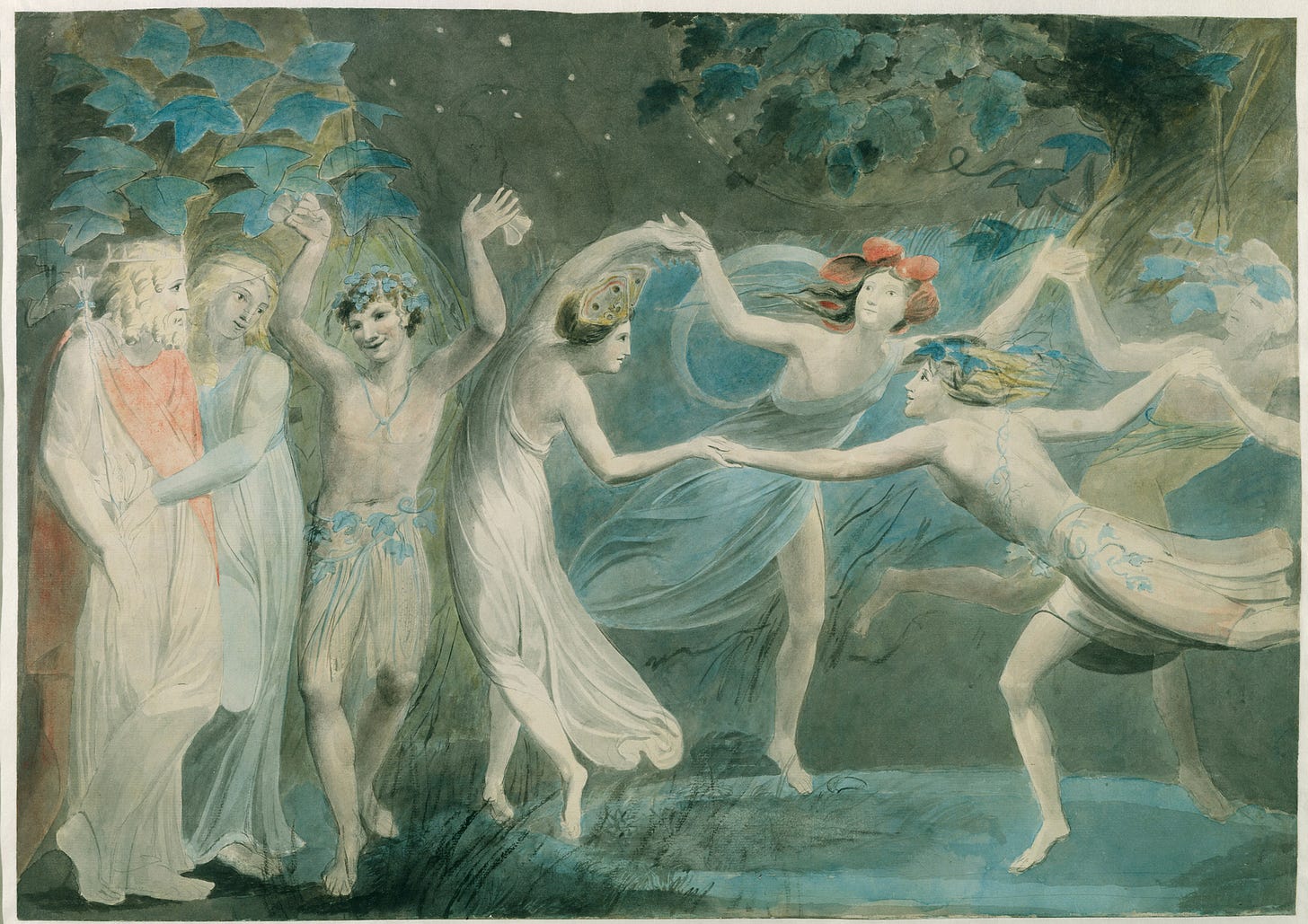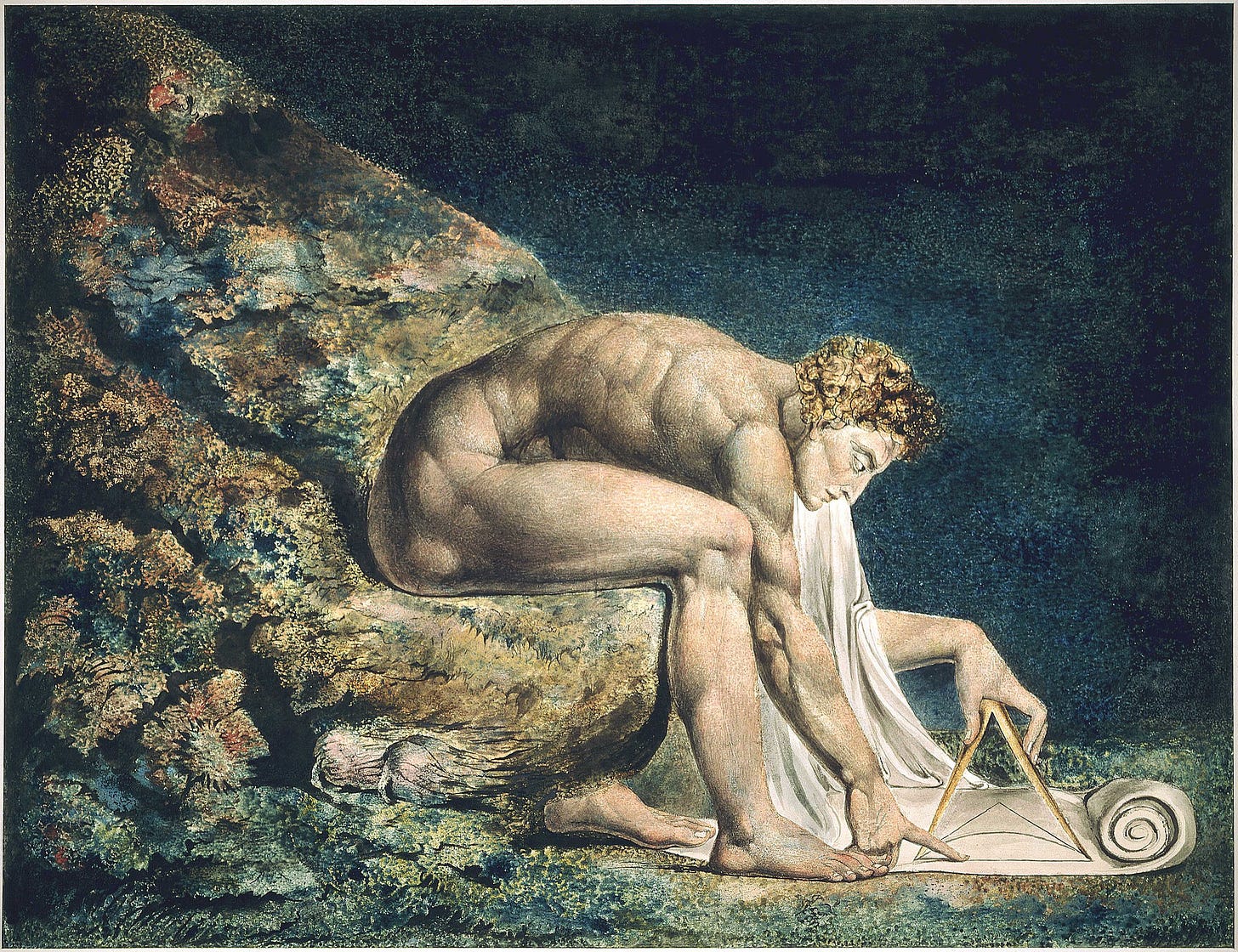Are you feeling recharged? If you’re a real person reading this, living a real life and not a bot, scraping content for LLMs to become stupid in new ways, then I imagine not.
It’s likely lunch time for and you already feel like you’ve had enough. Or maybe it’s the end of the day and somehow you’ve managed to find a bit of time for Physics Rediscovered, but your eyes betray you and fatigue is getting the best of you. It could be that it is morning and you’ve had a terrible night sleeping. Or maybe you haven’t slept at all…
Either way, you get the feeling how people like Ampère or Faraday felt in the 1820s. If you need a refresher, check out the sleepless, electromagnetic gold rush in previous episode.
But fear not, gentle reader. I will do my best to get your batteries running again, as we have a lot of knowledge to generate in this one.
Throw your magnets in the air like you just don’t care
Ok, long story short, no one was sleeping in the first decades of the 19th century. Ørsted opened a window to a completely new domain of physics and everyone lost their minds on the subject of electrodynamics. This discipline was so fresh that making significant progress was… I’m gonna say easy. If someone wanted to claim originality on any new experiment or phenomenon, then every second had to count.
The scientific centers in Paris and London were trying to outdo each other, on which can deliver the more spectacular and mind-bending display of their mastery of electricity and magnetism. Efforts in each city were led primarily by Ampère and Faraday, respectively. Both knew that the other was only a moment away from taking the advantage in the competition for the truth.
By the end of the 20’s we could rotate wires around magnets, magnets around wires and, as a result, even got the first electric motor going. One could say we got a pretty good handle on the flow of electricity (though not its nature) and the magnetic effects it caused.
But what about the other way around? Can a flow of magnetism cause electricity?
Perhaps this question was obvious, but no one had the time to explore it properly given the breakneck schedules of the researchers at the time. Maybe the notion was so completely outside the reservation that it simply hadn’t occurred to anyone for a while.
We’ll never know. Why? Because in 1831 Michael Faraday stated in his diary that he has discovered magnetic induction, but in his excitement forgot to tell us how. At least, he had the sense to tell us of the experiment. It looked almost like this:
Ok, so what’s happening here?
Faraday closed the circuit on the coiled wire on the left — the one with the battery (a Voltaic pile back then). The wire was wrapped around the iron ring, without touching it. Once the current started flowing from the battery, a magnetic field was generated from the left coil. The right coiled wire also didn’t touch the ring. Finally, the magnetic field from the left made a new, induced current run through the right wire, which Faraday noticed by the needle on his galvanometer (a compass, really) moving. This is a somewhat modern explanation. Faraday wasn’t exactly sure how the induced current was actually made.
Needless to say, he was excited:
“Upon using the power of one hundred pair of plates with this ring, the impulse at the galvanometer, when contact was completed or broken, was so great as to make the needle spin round rapidly four or five times before the air and terrestrial magnetism could reduce its motion to mere oscillations.”
Yup, he stacked a hundred plates on his pile to make sure he got a sufficient effect. Perhaps a bit of an overkill, but better too much than too little, right? I mean, it’s only electricity. What’s the worse that can happen? Oh, and if you need a refresher on Volta’s pile, I’m happy to oblige, here.
Faraday figured that if a current here can induce another current elsewhere, then maybe he could do the same with a simple magnet. Well, of course he could and he did, by running a simple bar magnet through a coiled wire and watching the compass needle at the end of that wire twitch.
I sometimes wonder how much and how many times one person’s mind can get blown before they stop responding to external stimuli. In his experimental decades, Faraday must’ve gotten his fair share of that. Creating electricity by waving a magnet around had to be one of those moments. The previous iterations of his induction experiments were static, but now it seemed that movement played a role as well.
But not just any movement he goddam pleased. Moving the magnet one way inside the wire, forced the needle one way. Moving it the other way had the opposite effect. When he waved the magnet around in random, twitchy moves, like he was having a seizure, it seemed to have no effect. That meant the direction and orientation of the moving magnet were important somehow. If that wasn’t enough, the speed of the magnet also seemed to matter, as the faster it went, the more the needle bent, meaning a stronger current in the coiled wire. How does one make sense out of that?
Look, I studied this stuff at a university and I still need to stop and think about what is actually going on. Fortunately, there are smarter people out there, people who don’t get overwhelmed easily. Faraday was one of them and, finally, he topped it all off by moving wire a live wire next to a dormant one and inducing new current in the latter. With this he exhausted the electromagnetic induction domain. He was British so I think wanker is the proper term for people like that.
The wanker actually demonstrated his findings to queen Victoria when she graced him with her presence in his lab. Think about being one of the first people to see induction in action. You move one thing here and another, disconnected thing moves over there. This was basically magic.
Faraday could’ve said that it was magic and that he was the greatest magician of all time. But it was just boring science. This story is somewhat anecdotal so versions vary. Basically, the Queen said something like “what’s the use?“ but it’s unclear whether she meant it like: “take my money and tell me how to use it“ or “what the hell am I supposed to do with that?“
It was probably more of the latter, but the applications of this discovery in the decades to come: dynamos, telephones, generating electricity and transporting it and basically the birth of the electric industry suggest it might’ve been a mistake.
Just cut the invisible strands of reality, you dummy
Boy, that’s a lot of stuff to juggle. How does one make sense of all this?
Ok, so active wires, with currents flowing through them, seemed to induce such currents in other, dormant wires. But that wasn’t the whole story. There was a subtlety to it that will prove to be extremely important later. It seemed that these induced currents wanted to oppose the ones that induced them in the first place. What Faraday and others noticed is that once the inducing current was switched on, the induced current liked to flow in the opposite direction. Then, when the inducing current was switched off and died down, the induced current seemed to pick up in the opposite direction. Maybe that’s because of some special state of matter that reacts with opposing electrical currents to the external ones, Faraday speculated. He called it the electro-tonic state and this type of wire-to-wire induction as Voltaic induction.
That’s mind-blowing enough, but now add moving magnets, which also seem to do the same. This was so much worse. The wire case was made “easier“ by being a static problem. Now, with magnets, the difficulty of adding speed and geometrical acrobatics is just punishing.
Faraday spent the next 20 years trying to figure this out. He made countless diligent, high-quality experiments, trying to get closer to the truth. Probably never before was Nature interrogated so mercilessly. Regardless of anything else, he could’ve died happy knowing that his work would set the go-to experiment standard for times to come and for any scientist hoping to earn their fame.
At the beginning of his his two decade long, chaotic struggle, he treated the Voltaic and magneto-induction as separate phenomenons. That made perfect sense at the time as the mechanisms of action seemed to differ significantly. The former, he could, temporarily, attribute to the mystical electro-tonic state and move on. However, the latter was an entirely different beast. Fortunately, there was a hint on how to deal with it.
For some time it’s been known to Faraday and his contemporaries that magnets have these weird lines around them. One could see them by spreading small iron filings in the area, like so:
So Faraday speculated that these magnetic curves actually represented the lines of force magnets exert on their environments. Then, he came up with the most consequential of insights.
The current would be induced in the wire when the wire would cut across these lines of force.
Whether the magnet was moving with respect to the wire, or the other way around, this idea seemed to explain all such experimental outcomes where motion was involved.
Being no small-time thinker, Faraday decided to use something large to rub this idea in everyones’ faces. It had to be something that would be difficult to miss. After some thought he decided a planet would do. That’s right. As the ultimate scientific flex, he showed that currents can be induced by cutting through the Earth’s magnetic lines of force.
A compass shows the way
All that was super impressive, but Faraday was now stuck with two distinct induction schemes: the Voltaic (caused by currents) and magnetic (by magnets, duh). On top of that he invented this electro-tonic state, which seemed like a very thin idea, even to himself. That maybe wouldn’t be so bad in itself if there wasn’t a subtle effect that made these ideas really suspicious.
That subtle effect was the Arago’s effect brought to you by François Arago. He took a compass and, when most considered it just a tool for navigation, he looked way beyond that simple functionality. When he did, he noticed something really strange. When he moved its needle out of its normal North-South position, the needle would oscillate back and forward, until it would settle to its relaxed, meridian state. That’s not the weird part. The weird part is that the amplitude of those swings depended on the casing of the compass.
Copper casings, for example, tended to diminish the oscillations much faster than, say, wooden ones. It seemed that something in those casings wanted to stop the movement of the needle somehow. Note that the year is 1824, so some time before Faraday had anything to say about induction. The effect looks like so:
Arago went further and did the next logical thing. He wagered that if a moving needle did something to a stationary conductor, then maybe a moving conductor could do something to a stationary needle.
And indeed it could. Arago proved it by taking a flat, copper disc and rotating it above the compass in the same plane, in which the needle would move. Almost by magic, the needle moved along with it. The crazy thing is that the disc was not a magnet and not connected to anything.
Side note here. Arago’s initial experiment sounds like it can be easily reproduced. You might think, gentle reader, that you could just buy an off-the-shelf compass, smack the needle and try different materials on it. If so, then let me save you the trouble. Modern compasses have inbuilt oscillation damping mechanisms. After all, who wants a compass that takes forever to show where North is.
Everything comes together
Faraday was well aware of Arago’s effect and had a rough time making sense of it. The material seemed to oppose the movement of the needle, which reminded him of the electro-tonic state that he invented with regards to induction through currents. However, nothing was connected to any source of electricity. Where would the currents be coming from?
And then you have the rotating disc, which sounds almost like rotating a magnet, except the disc isn’t magnetic. What now?
One way Faraday could get around it would be to say that there is a third type of induction, besides the Voltaic and magnetic. But being the smart wanker that he was, he went the opposite way.
He already had the solution in hand and just needed to make it fit.
One piece of the puzzle was that the induced effects seemed to work in opposition to the source of induction. That statement was solidified firmly in 1834 by another induction enthusiast — Heinrich Friedrich Emil Lenz. Today, we call it the Lenz’s law, because that’s how these naming things usually work.
The other piece was that the aforementioned magnetic lines of force had to exist around wires just as they do around magnets, but maybe in a different configuration. Because of the multitude of experiments in different geometrical setting, Faraday nailed it down to them having to be concentric around the wire and perpendicular to the running current.
Thus, he figured out that all of his induction experiments and Arago’s effect can be explained with his idea of cutting through magnetic fields just like with magnetic induction.
Here’s how it goes.
A wire creates looping magnetic fields, which in turn create a new, opposing current in the wire and therefore an opposing magnetic field. How is this compatible with cutting magnetic lines? Because as the inducing current intensifies so do the magnetic lines around the wire, which seems like they are expanding (or moving) through the dormant wire, which is a form of cutting. We can now forget about the electro-tonic nonsense.
What about Arago? Well, the magnetic compass needle moves and its lines of force are cutting through the compass casing, causing small currents to appear within (by the way, that’s how your induction stove works). These currents run in such a way that the magnetic lines they produce counteract the lines coming from the needle.
And the rotating disc? Though the copper disc has no current running through it, rotating it makes it seem to the world like there’s electricity running through a wire of a similar shape. That current, out of seemingly nothing, creates magnetic lines and these create a new current, and so on. By the way, we call these currents forming within a conductor eddy currents, because everyone thought Eddie was such a standup guy.
Learn math, kids
There. All done. The multitude of bizarre, confusing and borderline magical electromagnetic effects compressed into a single, simple rule of cutting through magnetic lines of force.
When Faraday made all of his findings public, the reception he got was, say… lukewarm. Despite all of his experiments and a truly inspired idea of unification, the crowd was not pleased. That’s because he had a certain flaw that, let’s say, made him offensive to the sensitivities of his contemporaries - he really sucked at math.
You see, Faraday was self-taught in everything he did. I’d say that him being able to compete with the more formally educated people of his time makes his achievements even more impressive. Yet in his adventures he forgot to learn how to express his ideas in mathematical form.
Everything we learn from Faraday is presented in an extensive and very verbal way. Pages upon pages of descriptions and explanations, never tamed by mathematical expressions. On top of that, his style didn’t make things easy to read.
Faraday was stuck, juggling words as best he could at a time when mathematics and its application to standardizing physics exploded with people like Siméon Denis Poisson and Pierre-Simon Laplace. All this made him look unprofessional and not worthy of much attention.
However, the truth can’t stay hidden or neglected for long and soon, another genuine unit was about to discover Faraday’s work and change the course of history.
For that story, stay tuned to another episode of Physics Rediscovered.













